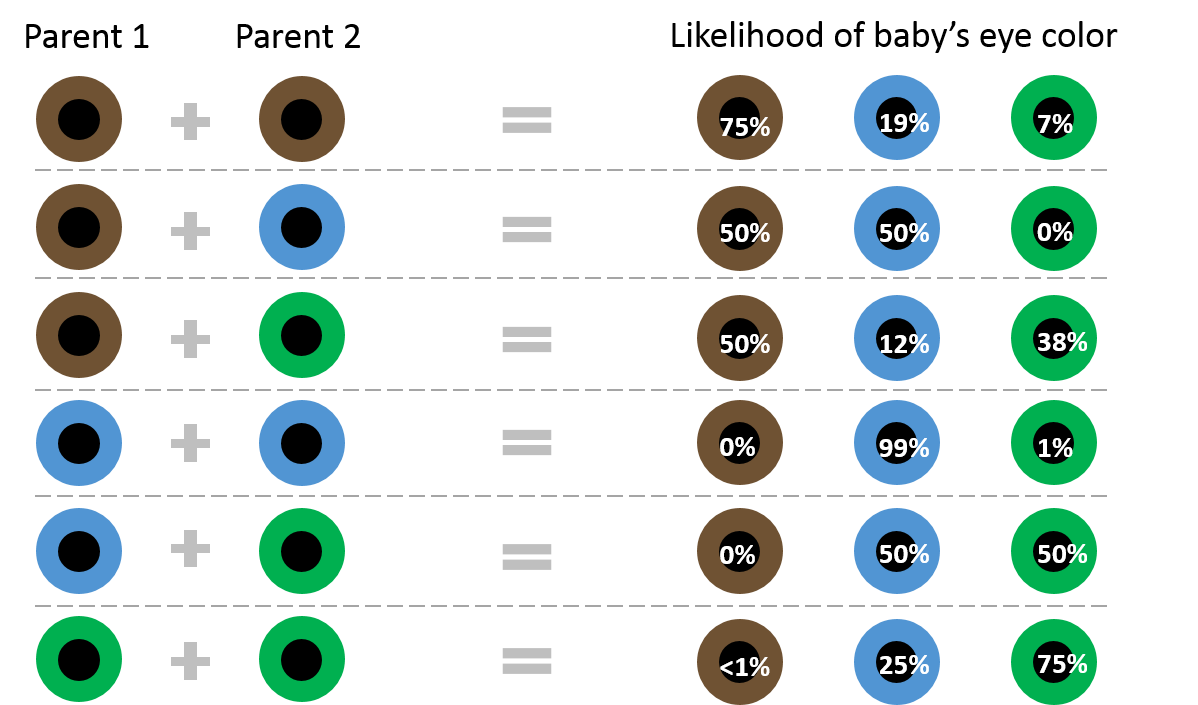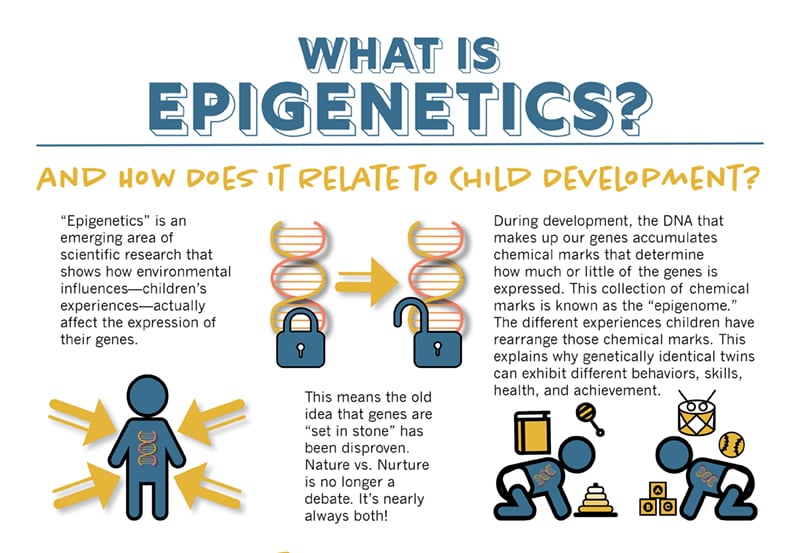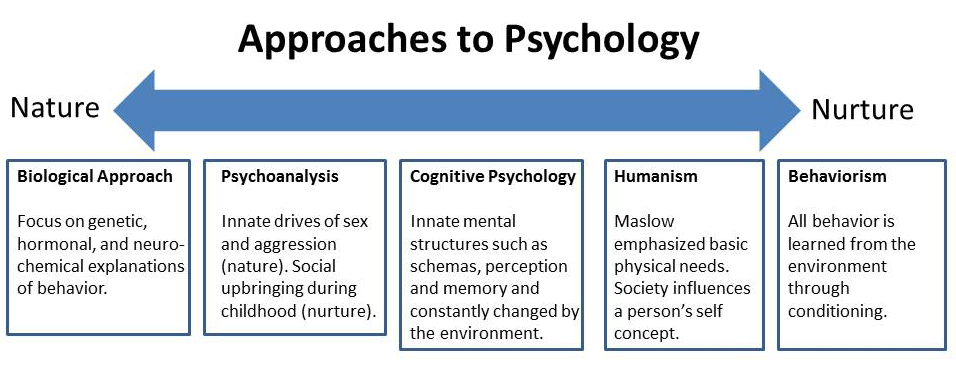On This Page:
The nature vs. nurture debate in psychology concerns the relative importance of an individual’s innate qualities (nature) versus personal experiences (nurture) in determining or causing individual differences in physical and behavioral traits. While early theories favored one factor over the other, contemporary views recognize a complex interplay between genes and environment in shaping behavior and development.
Key Takeaways
- Nature is what we think of as pre-wiring and is influenced by genetic inheritance and other biological factors.
- Nurture is generally taken as the influence of external factors after conception, e.g., the product of exposure, life experiences, and learning on an individual.
- Behavioral genetics has enabled psychology to quantify the relative contribution of nature and nurture concerning specific psychological traits.
- Instead of defending extreme nativist or nurturist views, most psychological researchers are now interested in investigating how nature and nurture interact in a host of qualitatively different ways.
- For example, epigenetics is an emerging area of research that shows how environmental influences affect the expression of genes.
The nature-nurture debate is concerned with the relative contribution that both influences make to human behavior, such as personality, cognitive traits, temperament and psychopathology.
Examples of Nature vs. Nurture
Nature vs. Nurture in Child Development
In child development, the nature vs. nurture debate is evident in the study of language acquisition. Researchers like Chomsky (1957) argue that humans are born with an innate capacity for language (nature), known as universal grammar, suggesting that genetics play a significant role in language development.
Conversely, the behaviorist perspective, exemplified by Skinner (1957), emphasizes the role of environmental reinforcement and learning (nurture) in language acquisition.
Twin studies have provided valuable insights into this debate, demonstrating that identical twins raised apart may share linguistic similarities despite different environments, suggesting a strong genetic influence (Bouchard, 1979)
However, environmental factors, such as exposure to language-rich environments, also play a crucial role in language development, highlighting the intricate interplay between nature and nurture in child development.
Nature vs. Nurture in Personality Development
The nature vs. nurture debate in personality psychology centers on the origins of personality traits. Twin studies have shown that identical twins reared apart tend to have more similar personalities than fraternal twins, indicating a genetic component to personality (Bouchard, 1994).
However, environmental factors, such as parenting styles, cultural influences, and life experiences, also shape personality.
For example, research by Caspi et al. (2003) demonstrated that a particular gene (MAOA) can interact with childhood maltreatment to increase the risk of aggressive behavior in adulthood.
This highlights that genetic predispositions and environmental factors contribute to personality development, and their interaction is complex and multifaceted.
Nature vs. Nurture in Mental Illness Development
The nature vs. nurture debate in mental health explores the etiology of depression. Genetic studies have identified specific genes associated with an increased vulnerability to depression, indicating a genetic component (Sullivan et al., 2000).
However, environmental factors, such as adverse life events and chronic stress during childhood, also play a significant role in the development of depressive disorders (Dube et al.., 2002; Keller et al., 2007)
The diathesis-stress model posits that individuals inherit a genetic predisposition (diathesis) to a disorder, which is then activated or exacerbated by environmental stressors (Monroe & Simons, 1991).
This model illustrates how nature and nurture interact to influence mental health outcomes.
Nature vs. Nurture of Intelligence
The nature vs. nurture debate in intelligence examines the relative contributions of genetic and environmental factors to cognitive abilities.
Intelligence is highly heritable, with about 50% of variance in IQ attributed to genetic factors, based on studies of twins, adoptees, and families (Plomin & Spinath, 2004).
Heritability of intelligence increases with age, from about 20% in infancy to as high as 80% in adulthood, suggesting amplifying effects of genes over time.
However, environmental influences, such as access to quality education and stimulating environments, also significantly impact intelligence.
Shared environmental influences like family background are more influential in childhood, whereas non-shared experiences are more important later in life.
Research by Flynn (1987) showed that average IQ scores have increased over generations, suggesting that environmental improvements, known as the Flynn effect, can lead to substantial gains in cognitive abilities.
Molecular genetics provides tools to identify specific genes and understand their pathways and interactions. However, progress has been slow for complex traits like intelligence. Identified genes have small effect sizes (Plomin & Spinath, 2004).
Overall, intelligence results from complex interplay between genes and environment over development. Molecular genetics offers promise to clarify these mechanisms. The nature vs nurture debate is outdated – both play key roles.
Nativism (Extreme Nature Position)
It has long been known that certain physical characteristics are biologically determined by genetic inheritance.
Color of eyes, straight or curly hair, pigmentation of the skin, and certain diseases (such as Huntingdon’s chorea) are all a function of the genes we inherit.

These facts have led many to speculate as to whether psychological characteristics such as behavioral tendencies, personality attributes, and mental abilities are also “wired in” before we are even born.
Those who adopt an extreme hereditary position are known as nativists. Their basic assumption is that the characteristics of the human species as a whole are a product of evolution and that individual differences are due to each person’s unique genetic code.
In general, the earlier a particular ability appears, the more likely it is to be under the influence of genetic factors. Estimates of genetic influence are called heritability.
Examples of extreme nature positions in psychology include Chomsky (1965), who proposed language is gained through the use of an innate language acquisition device. Another example of nature is Freud’s theory of aggression as being an innate drive (called Thanatos).
Characteristics and differences that are not observable at birth, but which emerge later in life, are regarded as the product of maturation. That is to say, we all have an inner “biological clock” which switches on (or off) types of behavior in a pre-programmed way.
The classic example of the way this affects our physical development are the bodily changes that occur in early adolescence at puberty.
However, nativists also argue that maturation governs the emergence of attachment in infancy, language acquisition, and even cognitive development.
Empiricism (Extreme Nurture Position)
At the other end of the spectrum are the environmentalists – also known as empiricists (not to be confused with the other empirical/scientific approach).
Their basic assumption is that at birth, the human mind is a tabula rasa (a blank slate) and that this is gradually “filled” as a result of experience (e.g., behaviorism).
From this point of view, psychological characteristics and behavioral differences that emerge through infancy and childhood are the results of learning. It is how you are brought up (nurture) that governs the psychologically significant aspects of child development and the concept of maturation applies only to the biological.
For example, Bandura’s (1977) social learning theory states that aggression is learned from the environment through observation and imitation. This is seen in his famous bobo doll experiment (Bandura, 1961).

Also, Skinner (1957) believed that language is learned from other people via behavior-shaping techniques.
Evidence for Nature
Freud (1905) stated that events in our childhood have a great influence on our adult lives, shaping our personality.
He thought that parenting is of primary importance to a child’s development, and the family as the most important feature of nurture was a common theme throughout twentieth-century psychology (which was dominated by environmentalists’ theories).
Behavioral Genetics
Researchers in the field of behavioral genetics study variation in behavior as it is affected by genes, which are the units of heredity passed down from parents to offspring.
“We now know that DNA differences are the major systematic source of psychological differences between us. Environmental effects are important but what we have learned in recent years is that they are mostly random – unsystematic and unstable – which means that we cannot do much about them.”
Plomin (2018, xii)
Behavioral genetics has enabled psychology to quantify the relative contribution of nature and nurture with regard to specific psychological traits. One way to do this is to study relatives who share the same genes (nature) but a different environment (nurture). Adoption acts as a natural experiment which allows researchers to do this.
Empirical studies have consistently shown that adoptive children show greater resemblance to their biological parents, rather than their adoptive, or environmental parents (Plomin & DeFries, 1983; 1985).
Another way of studying heredity is by comparing the behavior of twins, who can either be identical (sharing the same genes) or non-identical (sharing 50% of genes). Like adoption studies, twin studies support the first rule of behavior genetics; that psychological traits are extremely heritable, about 50% on average.
The Twins in Early Development Study (TEDS) revealed correlations between twins on a range of behavioral traits, such as personality (empathy and hyperactivity) and components of reading such as phonetics (Haworth, Davis, Plomin, 2013; Oliver & Plomin, 2007; Trouton, Spinath, & Plomin, 2002).
Implications
Jenson (1969) found that the average I.Q. scores of black Americans were significantly lower than whites he went on to argue that genetic factors were mainly responsible – even going so far as to suggest that intelligence is 80% inherited.
The storm of controversy that developed around Jenson’s claims was not mainly due to logical and empirical weaknesses in his argument. It was more to do with the social and political implications that are often drawn from research that claims to demonstrate natural inequalities between social groups.
For many environmentalists, there is a barely disguised right-wing agenda behind the work of the behavioral geneticists. In their view, part of the difference in the I.Q. scores of different ethnic groups are due to inbuilt biases in the methods of testing.
More fundamentally, they believe that differences in intellectual ability are a product of social inequalities in access to material resources and opportunities. To put it simply children brought up in the ghetto tend to score lower on tests because they are denied the same life chances as more privileged members of society.
Now we can see why the nature-nurture debate has become such a hotly contested issue. What begins as an attempt to understand the causes of behavioral differences often develops into a politically motivated dispute about distributive justice and power in society.
What’s more, this doesn’t only apply to the debate over I.Q. It is equally relevant to the psychology of sex and gender, where the question of how much of the (alleged) differences in male and female behavior is due to biology and how much to culture is just as controversial.
Polygenic Inheritance
Rather than the presence or absence of single genes being the determining factor that accounts for psychological traits, behavioral genetics has demonstrated that multiple genes – often thousands, collectively contribute to specific behaviors.
Thus, psychological traits follow a polygenic mode of inheritance (as opposed to being determined by a single gene). Depression is a good example of a polygenic trait, which is thought to be influenced by around 1000 genes (Plomin, 2018).
This means a person with a lower number of these genes (under 500) would have a lower risk of experiencing depression than someone with a higher number.
The Nature of Nurture
Nurture assumes that correlations between environmental factors and psychological outcomes are caused environmentally. For example, how much parents read with their children and how well children learn to read appear to be related. Other examples include environmental stress and its effect on depression.
However, behavioral genetics argues that what look like environmental effects are to a large extent really a reflection of genetic differences (Plomin & Bergeman, 1991).
People select, modify and create environments correlated with their genetic disposition. This means that what sometimes appears to be an environmental influence (nurture) is a genetic influence (nature).
So, children that are genetically predisposed to be competent readers, will be happy to listen to their parents read them stories, and be more likely to encourage this interaction.
Interaction Effects
However, in recent years there has been a growing realization that the question of “how much” behavior is due to heredity and “how much” to the environment may itself be the wrong question.
Take intelligence as an example. Like almost all types of human behavior, it is a complex, many-sided phenomenon which reveals itself (or not!) in a great variety of ways.
The “how much” question assumes that psychological traits can all be expressed numerically and that the issue can be resolved in a quantitative manner.
Heritability statistics revealed by behavioral genetic studies have been criticized as meaningless, mainly because biologists have established that genes cannot
influence development independently of environmental factors; genetic and nongenetic factors always cooperate to build traits. The reality is that
nature and culture interact in a host of qualitatively different ways (Gottlieb, 2007; Johnston & Edwards, 2002).
Instead of defending extreme nativist or nurturist views, most psychological researchers are now interested in investigating how nature and nurture interact.
For example, in psychopathology, this means that both a genetic predisposition and an appropriate environmental trigger are required for a mental disorder to develop. For example, epigenetics state that environmental influences affect the expression of genes.

What is Epigenetics?
Epigenetics is the term used to describe inheritance by mechanisms other than through the DNA sequence of genes. For example, features of a person’s physical and social environment can effect which genes are switched-on, or “expressed”, rather than the DNA sequence of the genes themselves.
Stressors and memories can be passed through small RNA molecules to multiple generations of offspring in ways that meaningfully affect their behavior.
One such example is what is known as the Dutch Hunger Winter, during last year of the Second World War. What they found was that children who were in the womb during the famine experienced a life-long increase in their chances of developing various health problems compared to children conceived after the famine.
Epigenetic effects can sometimes be passed from one generation to the next, although the effects only seem to last for a few generations. There is some evidence that the effects of the Dutch Hunger Winter affected grandchildren of women who were pregnant during the famine.
Therefore, it makes more sense to say that the difference between two people’s behavior is mostly due to hereditary factors or mostly due to environmental factors.
This realization is especially important given the recent advances in genetics, such as polygenic testing. The Human Genome Project, for example, has stimulated enormous interest in tracing types of behavior to particular strands of DNA located on specific chromosomes.
If these advances are not to be abused, then there will need to be a more general understanding of the fact that biology interacts with both the cultural context and the personal choices that people make about how they want to live their lives.
There is no neat and simple way of unraveling these qualitatively different and reciprocal influences on human behavior.
Epigenetics: Licking Rat Pups
Michael Meaney and his colleagues at McGill University in Montreal, Canada conducted the landmark epigenetic study on mother rats licking and grooming their pups.
This research found that the amount of licking and grooming received by rat pups during their early life could alter their epigenetic marks and influence their stress responses in adulthood.
Pups that received high levels of maternal care (i.e., more licking and grooming) had a reduced stress response compared to those that received low levels of maternal care.
Meaney’s work with rat maternal behavior and its epigenetic effects has provided significant insights into the understanding of early-life experiences, gene expression, and adult behavior.
It underscores the importance of the early-life environment and its long-term impacts on an individual’s mental health and stress resilience.
Epigenetics: The Agouti Mouse Study
Waterland and Jirtle’s 2003 study on the Agouti mouse is another foundational work in the field of epigenetics that demonstrated how nutritional factors during early development can result in epigenetic changes that have long-lasting effects on phenotype.
In this study, they focused on a specific gene in mice called the Agouti viable yellow (A^vy) gene. Mice with this gene can express a range of coat colors, from yellow to mottled to brown.
This variation in coat color is related to the methylation status of the A^vy gene: higher methylation is associated with the brown coat, and lower methylation with the yellow coat.
Importantly, the coat color is also associated with health outcomes, with yellow mice being more prone to obesity, diabetes, and tumorigenesis compared to brown mice.
Waterland and Jirtle set out to investigate whether maternal diet, specifically supplementation with methyl donors like folic acid, choline, betaine, and vitamin B12, during pregnancy could influence the methylation status of the A^vy gene in offspring.
Key findings from the study include:
-
Dietary Influence: When pregnant mice were fed a diet supplemented with methyl donors, their offspring had an increased likelihood of having the brown coat color. This indicated that the supplemented diet led to an increased methylation of the A^vy gene.
-
Health Outcomes: Along with the coat color change, these mice also had reduced risks of obesity and other health issues associated with the yellow phenotype.
-
Transgenerational Effects: The study showed that nutritional interventions could have effects that extend beyond the individual, affecting the phenotype of the offspring.
The implications of this research are profound. It highlights how maternal nutrition during critical developmental periods can have lasting effects on offspring through epigenetic modifications, potentially affecting health outcomes much later in life.
The study also offers insights into how dietary and environmental factors might contribute to disease susceptibility in humans.
References
Bandura, A. Ross, D., & Ross, S. A. (1961). Transmission of aggression through the imitation of aggressive models. Journal of Abnormal and Social Psychology, 63, 575-582
Bandura, A. (1977). Social learning theory. Englewood Cliffs, NJ: Prentice Hall.
Bouchard, T. J. (1994). Genes, Environment, and Personality. Science, 264(5166), 1700-1701.
Bowlby, J. (1969). Attachment. Attachment and loss: Vol. 1. Loss. New York: Basic Books.
Caspi, A., Sugden, K., Moffitt, T. E., Taylor, A., Craig, I. W., Harrington, H., … & Poulton, R. (2003). Influence of life stress on depression: moderation by a polymorphism in the 5-HTT gene. Science, 301(5631), 386-389.
Chomsky, N. (1957). Syntactic structures. Mouton de Gruyter.
Chomsky, N. (1965). Aspects of the theory of syntax. MIT Press.
Dube, S. R., Anda, R. F., Felitti, V. J., Edwards, V. J., & Croft, J. B. (2002). Adverse childhood experiences and personal alcohol abuse as an adult. Addictive Behaviors, 27(5), 713-725.
Flynn, J. R. (1987). Massive IQ gains in 14 nations: What IQ tests really measure. Psychological Bulletin, 101(2), 171.
Freud, S. (1905). Three essays on the theory of sexuality. Se, 7.
Galton, F. (1883). Inquiries into human faculty and its development. London: J.M. Dent & Co.
Gottlieb, G. (2007). Probabilistic epigenesis. Developmental Science, 10, 1–11.
Haworth, C. M., Davis, O. S., & Plomin, R. (2013). Twins Early Development Study (TEDS): a genetically sensitive investigation of cognitive and behavioral development from childhood to young adulthood. Twin Research and Human Genetics, 16(1), 117-125.
Jensen, A. R. (1969). How much can we boost I.Q. and scholastic achievement? Harvard Educational Review, 33, 1-123.
Johnston, T. D., & Edwards, L. (2002). Genes, interactions, and the development of behavior. Psychological Review, 109, 26–34.
Keller, M. C., Neale, M. C., & Kendler, K. S. (2007). Association of different adverse life events with distinct patterns of depressive symptoms. American Journal of Psychiatry, 164(10), 1521-1529.
Monroe, S. M., & Simons, A. D. (1991). Diathesis-stress theories in the context of life stress research: implications for the depressive disorders. Psychological Bulletin, 110(3), 406.
Oliver, B. R., & Plomin, R. (2007). Twins” Early Development Study (TEDS): A multivariate, longitudinal genetic investigation of language, cognition and behavior problems from childhood through adolescence. Twin Research and Human Genetics, 10(1), 96-105.
Petrill, S. A., Plomin, R., Berg, S., Johansson, B., Pedersen, N. L., Ahern, F., & McClearn, G. E. (1998). The genetic and environmental relationship between general and specific cognitive abilities in twins age 80 and older. Psychological Science, 9(3), 183-189.
Plomin, R., & Petrill, S. A. (1997). Genetics and intelligence: What’s new?. Intelligence, 24(1), 53-77.
Plomin, R. (2018). Blueprint: How DNA makes us who we are. MIT Press.
Plomin, R., & Bergeman, C. S. (1991). The nature of nurture: Genetic influence on “environmental” measures. behavioral and Brain Sciences, 14(3), 373-386.
Plomin, R., & DeFries, J. C. (1983). The Colorado adoption project. Child Development, 276-289.
Plomin, R., & DeFries, J. C. (1985). The origins of individual differences in infancy; the Colorado adoption project. Science, 230, 1369-1371.
Plomin, R., & Spinath, F. M. (2004). Intelligence: genetics, genes, and genomics. Journal of personality and social psychology, 86(1), 112.
Plomin, R., & Von Stumm, S. (2018). The new genetics of intelligence. Nature Reviews Genetics, 19(3), 148-159.
Skinner, B. F. (1957). Verbal behavior. Acton, MA: Copley Publishing Group.
Sullivan, P. F., Neale, M. C., & Kendler, K. S. (2000). Genetic epidemiology of major depression: review and meta-analysis. American Journal of Psychiatry, 157(10), 1552-1562.
Szyf, M., Weaver, I. C., Champagne, F. A., Diorio, J., & Meaney, M. J. (2005). Maternal programming of steroid receptor expression and phenotype through DNA methylation in the rat. Frontiers in neuroendocrinology, 26(3-4), 139-162.
Trouton, A., Spinath, F. M., & Plomin, R. (2002). Twins early development study (TEDS): a multivariate, longitudinal genetic investigation of language, cognition and behavior problems in childhood. Twin Research and Human Genetics, 5(5), 444-448.
Waterland, R. A., & Jirtle, R. L. (2003). Transposable elements: targets for early nutritional effects on epigenetic gene regulation. Molecular and cellular biology, 23 (15), 5293-5300.
Further Information
Evidence for Nurture
Evidence for Nature
Evidence for an Interaction
What does nature refer to in the nature vs. nurture debate?
In the nature vs. nurture debate, “nature” refers to the influence of genetics, innate qualities, and biological factors on human development, behavior, and traits. It emphasizes the role of hereditary factors in shaping who we are.
What does nurture refer to in the nature vs. nurture debate?
In the nature vs. nurture debate, “nurture” refers to the influence of the environment, upbringing, experiences, and social factors on human development, behavior, and traits. It emphasizes the role of external factors in shaping who we are.
Why is it important to determine the contribution of heredity (nature) and environment (nurture) in human development?
Determining the contribution of heredity and environment in human development is crucial for understanding the complex interplay between genetic factors and environmental influences. It helps identify the relative significance of each factor, informing interventions, policies, and strategies to optimize human potential and address developmental challenges.


